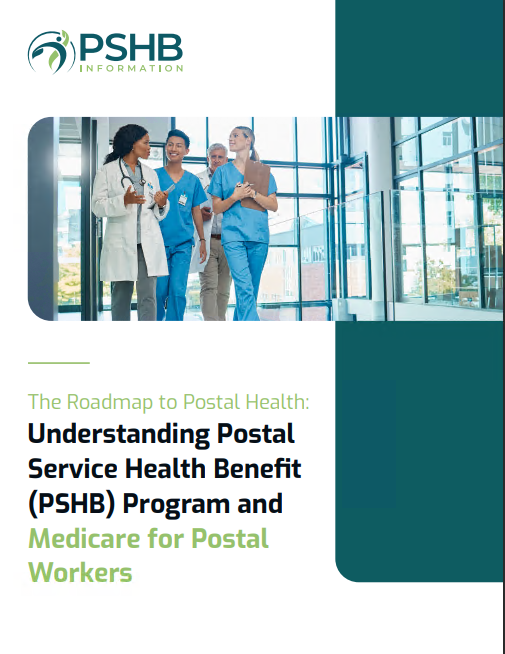Key Takeaways
-
Your PSHB premiums are influenced by several factors, including government contributions, plan type, and Medicare enrollment. Understanding these elements helps you make better financial decisions.
-
Cost-sharing aspects like deductibles, copays, and out-of-pocket maximums determine your overall healthcare expenses beyond the premium itself.
What Determines Your PSHB Premiums?
When choosing a Postal Service Health Benefits (PSHB) plan, the premium is one of the first numbers you’ll check. However, there’s more to it than just the amount deducted from your paycheck or pension. Several factors impact what you pay, and understanding them can give you a new perspective on your healthcare costs.
Government Contributions: Your Share vs. Their Share
The federal government covers a significant portion of your PSHB premium, usually around 70%. This means that while you see one number listed as the total premium, you’re only responsible for a fraction of it. The remaining cost is subsidized, which makes PSHB plans more affordable compared to purchasing an individual policy on the open market.
But here’s the catch: the government’s share is based on a weighted average of all PSHB plans, so if you choose a more expensive option, your share increases. This is why comparing plans each year is crucial—some may offer better benefits for a similar out-of-pocket cost.
Self Only, Self Plus One, or Self and Family: Choosing the Right Tier
PSHB premiums vary based on the coverage tier you select:
-
Self Only: Covers just you and is the most affordable tier.
-
Self Plus One: Includes one eligible family member, often a spouse.
-
Self and Family: Covers multiple eligible family members, making it the highest-cost tier.
If you’re carrying unnecessary coverage, you may be overpaying. On the flip side, if you underestimate your needs and choose Self Only when your family requires coverage, you could face higher out-of-pocket expenses in medical bills. Reviewing your coverage level annually ensures you’re making the most cost-effective decision.
The Medicare Factor: How It Impacts Your Premiums
If you’re enrolled in both PSHB and Medicare Part B, your premium structure may look different. Many PSHB plans offer incentives like lower deductibles and reduced copays for those with Medicare. In some cases, plans may reimburse a portion of your Part B premium, making Medicare enrollment financially advantageous.
But not all plans offer these benefits equally. If you’re approaching Medicare eligibility, it’s worth comparing how different PSHB plans integrate with Part B to ensure you maximize your savings.
Beyond Premiums: The Cost-Sharing Factors You Need to Know
Premiums aren’t the only costs you’ll face. To truly understand the value of your PSHB plan, you need to examine the cost-sharing structure, including:
Deductibles: The Upfront Cost Before Benefits Kick In
Your deductible is the amount you pay out of pocket before your plan starts covering expenses. Low-deductible plans may have higher premiums, while high-deductible plans often come with lower premiums but greater initial costs when you need care.
Copays: The Fixed Costs for Services
Each time you visit a doctor, fill a prescription, or use a medical service, you may be required to pay a copay. These fixed costs can range from a small amount for primary care visits to higher amounts for specialists and emergency room visits.
Coinsurance: The Percentage You Pay After Meeting Your Deductible
Unlike copays, which are fixed amounts, coinsurance is a percentage of the total cost of a service. If your plan has a 20% coinsurance rate for hospital stays, you’ll pay 20% of the total bill, while your plan covers the rest.
Out-of-Pocket Maximums: Your Financial Safety Net
PSHB plans cap the amount you must pay in a given year through out-of-pocket maximums. Once you reach this limit, your plan covers 100% of covered services for the rest of the year. If you have frequent medical needs, choosing a plan with a lower out-of-pocket maximum could save you thousands in healthcare expenses.
Annual Adjustments: How Your Premiums Change Over Time
PSHB premiums are adjusted each year based on various factors, including healthcare inflation, plan utilization, and changes in government contributions. Some years, you might see only a small increase, while in others, premiums could rise significantly. Keeping up with these changes during Open Season ensures you’re never caught off guard.
The Open Season Window: When You Can Make Changes
Each year, from November 11 to December 13, you have the opportunity to switch PSHB plans, adjust your coverage tier, or enroll in Medicare to optimize your benefits. If you let Open Season pass without reviewing your options, you may end up paying more than necessary or missing out on better coverage.
Making the Right Choice for Your Healthcare Needs
Choosing a PSHB plan isn’t just about picking the lowest premium—it’s about finding a balance between costs and coverage. By understanding government contributions, Medicare integration, cost-sharing elements, and annual adjustments, you can make an informed decision that suits your budget and health needs.
To explore your options further, get in touch with a licensed agent listed on this website. They can provide personalized insights to help you select the best plan for your situation.








